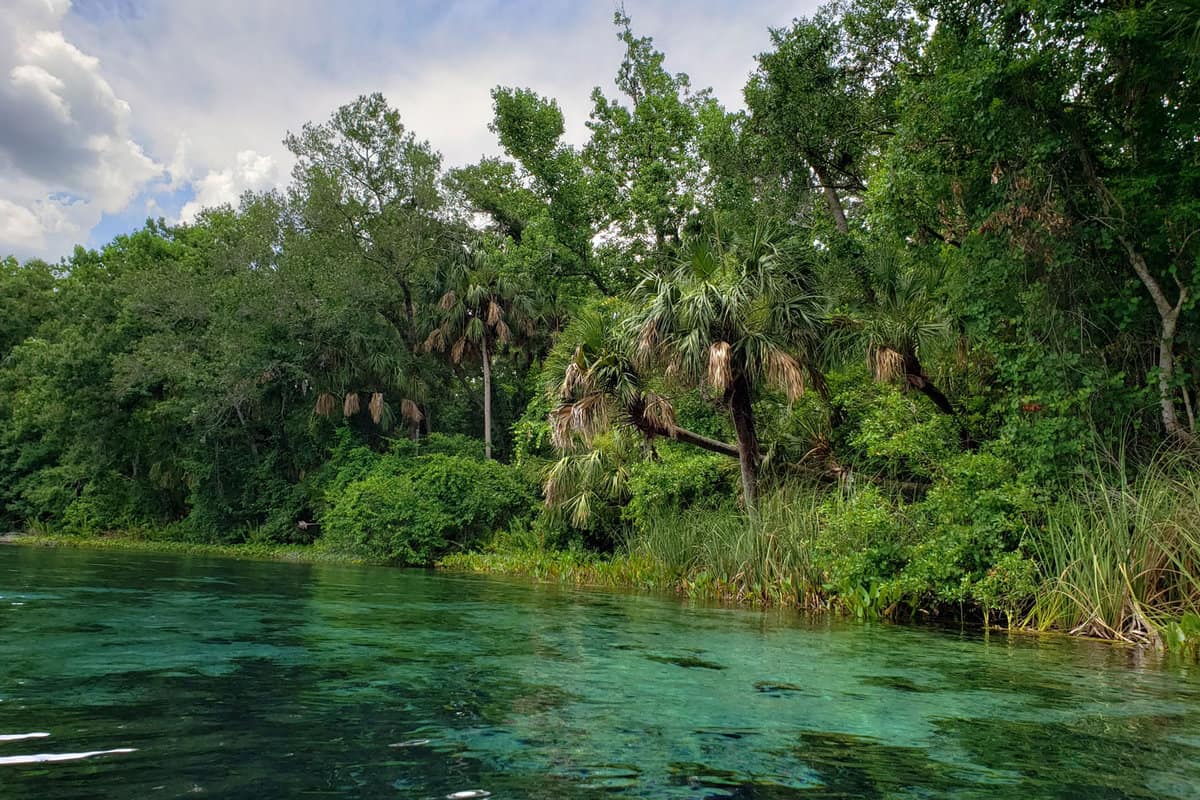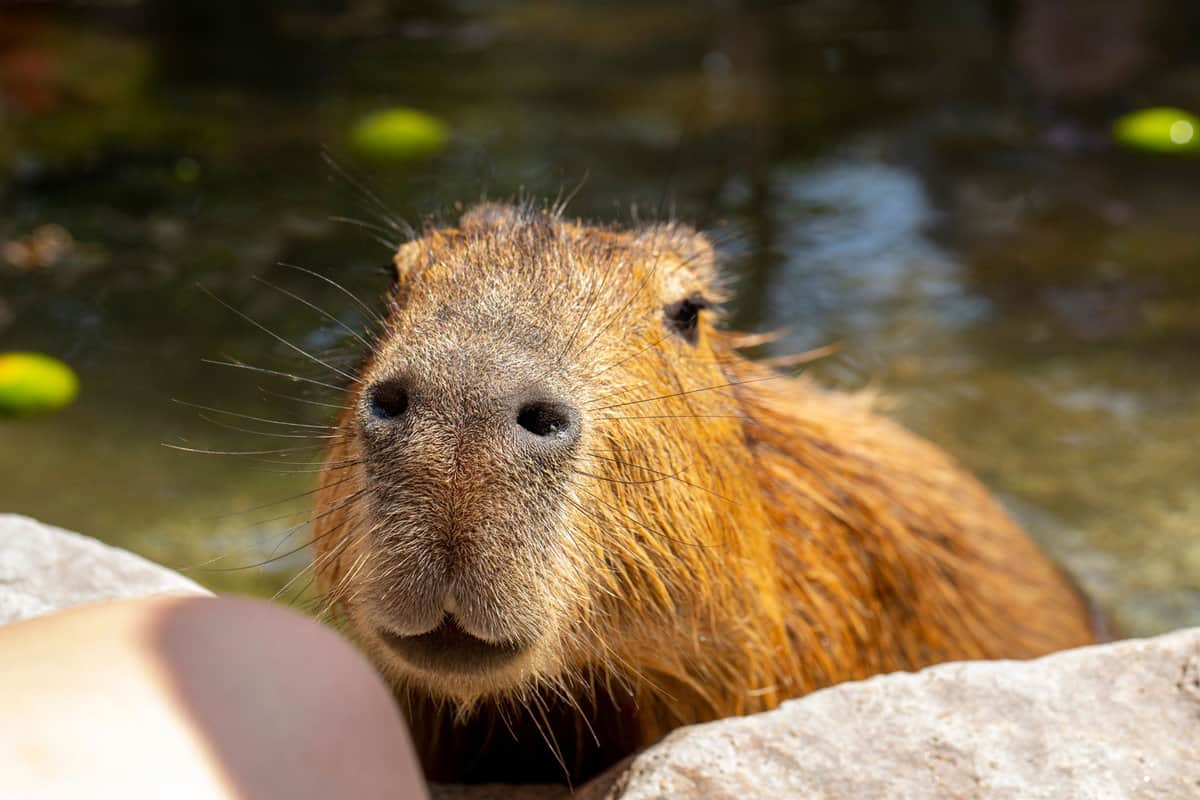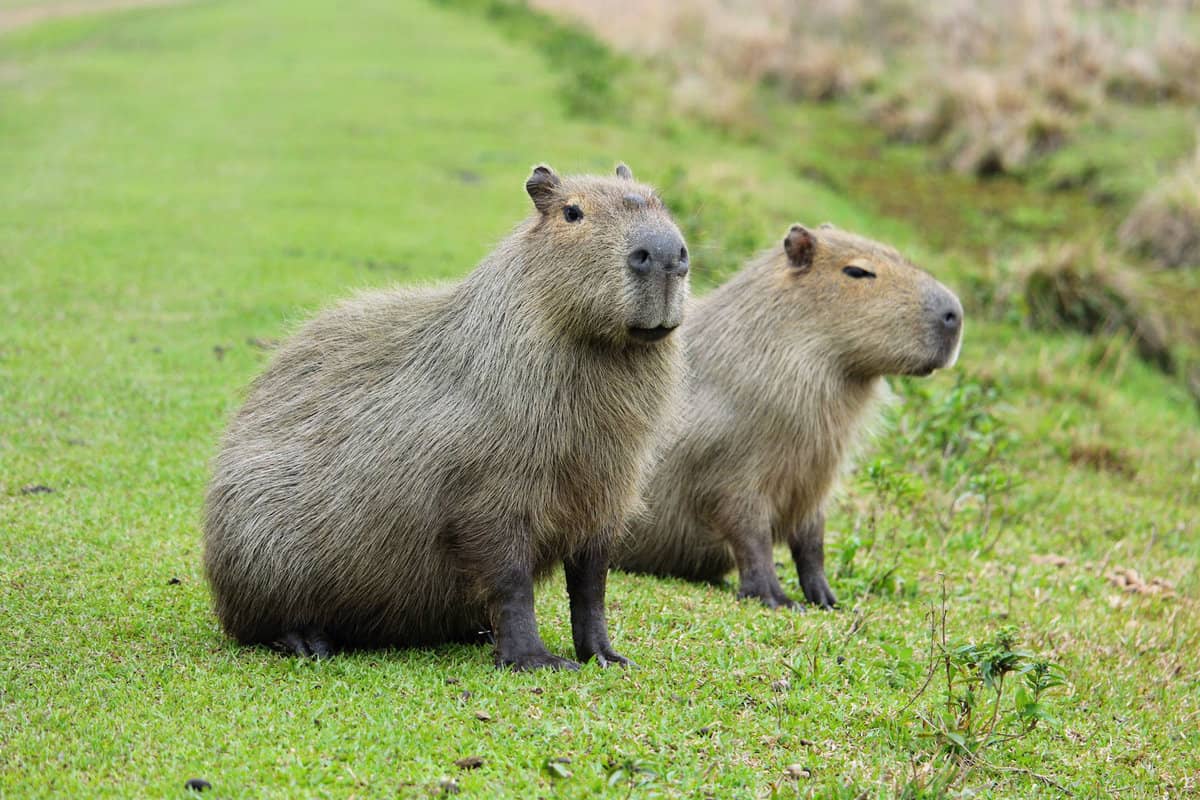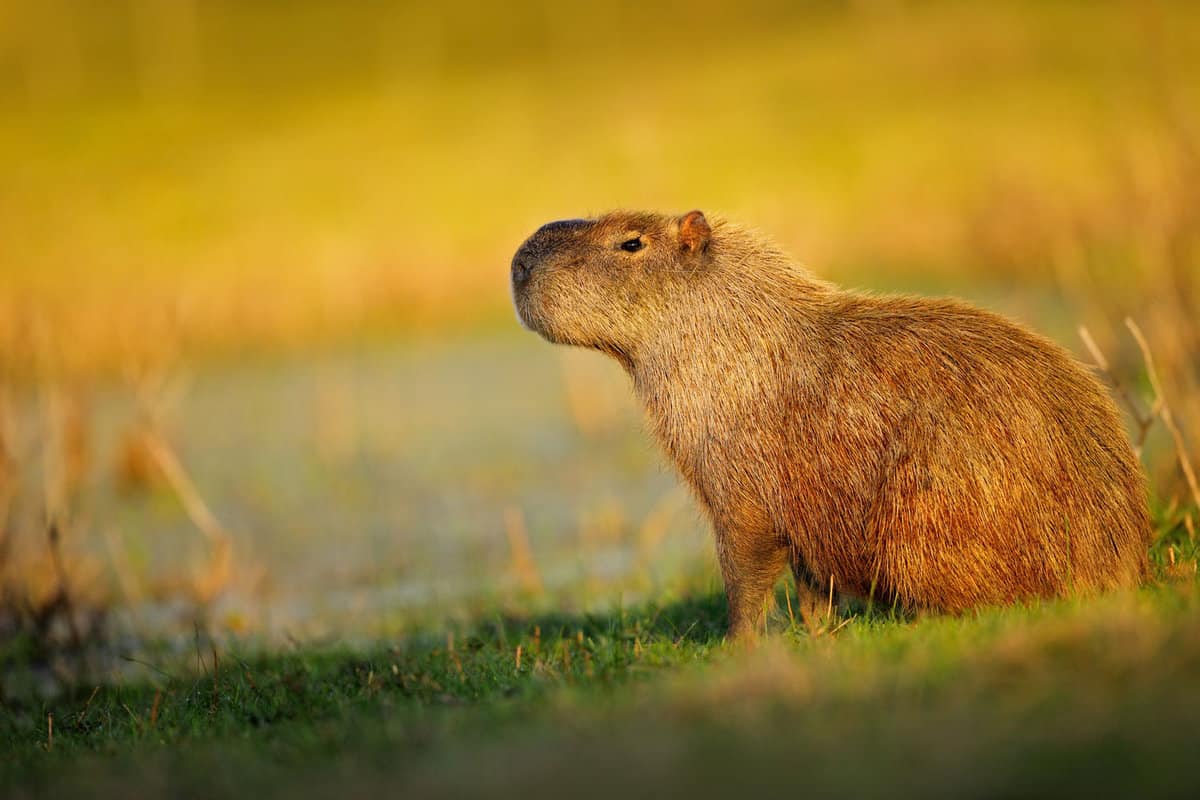Capybaras in Florida have made a notable presence, being the world's largest rodent, growing up to 4 feet in length and weighing around 100 pounds.
These sizable creatures have established small wild communities in the Sunshine State due to escaped or released pets.
Read on to discover the top locations in Florida where you can encounter these magnificent rodents.
Where To Find Capybaras In Florida
1. Ellie Schiller Homosassa Springs Wildlife State Park
This wildlife park 100 miles north of Tampa contains a small group of capybaras that live among the manatees, alligators, and other animals.

Visitors can easily view the capybaras swimming, grazing, or lounging in the main spring. Their exhibit provides above-water and underwater viewing opportunities.
2. Ocala National Forest
Parts of the Ocala National Forest, including Clearwater Lake, have seen occasional capybara sightings likely stemming from escaped or illegally released pets years ago.

While spotting the elusive rodents takes luck, their size makes them visible. Look for grazing along lake banks.
3. Highlands County
Areas of rural Highlands County have reported capybara populations living in cattle-grazing lands and drainage ditches.

Residents observe them near Florida Mammoth Groves and other locations. While less accessible for viewing, their sheer size makes capybaras stand out in the landscape.
4. Green Swamp
Ecologists have confirmed a colony of at least 50 capybaras inhabiting the Green Swamp of Central Florida.
This expansive swamp provides the seclusion capybaras favor. Spotting them requires good fortune given the thick vegetation, but they do leave tracks.

While uncommon, Florida's giant rodent transplants offer a thrill for mammal enthusiasts.
But capybaras face challenges adapting long-term, highlighting why exotic pets rarely fare well in wild settings.
Tips for Responsible Capybara Viewing
When given the exciting chance to view Florida's wild capybara populations, follow these responsible practices:
1. Observe from a safe distance of at least 50 feet.

Do not approach or interfere with the giant rodents as they can bite if feeling threatened.
2. Do not feed capybaras.

Human food can make them ill and they can find their own plant diet in their surroundings.
3. Never capture, handle, or try to interact with capybaras.
This stresses them and risks your safety.
4. Avoid excessive noise that could disturb natural behaviors.
Be respectful of their habitat and never chase or encircle capybaras if observed. Do not enter private lands without express permission to avoid harming access for future viewers.
Following ethical wildlife viewing guidelines ensures capybaras remain comfortably wild while allowing you to safely enjoy observing nature's giants.
Why Do We Love Capybaras?
Capybaras (Hydrochoerus hydrochaeris), the largest rodents in the world and native to South America, have gained tremendous popularity on social media, amassing billions of views in captivating videos.
Their charm found viral fame on platforms like TikTok, where they gathered 6.8 billion views!

This surge in fascination can be attributed to several factors, including their gentle demeanor, distinctive appearance, and novelty.
While some individuals choose to keep capybaras as pets, it's crucial to acknowledge their unique needs for proper care and companionship.
As herd animals, capybaras thrive in the company of their own kind, often forming groups called herds comprising 10 to 20 individuals.
To ensure their well-being, ample space and appropriate nutrition are essential components of their care.
For those considering capybaras as pets, diligent research and a commitment to meeting their specific requirements are vital.
Their self-assured nature can be attributed to their intelligence and the fact that they have fewer predators to contend with in their natural habitat.

In addition to their confidence, capybaras exhibit a remarkable ability to communicate through a range of sounds, from barks to purrs, chirps, and whistles.
Interestingly, capybaras are also masters of relaxation, often assuming a distinctive posture that showcases their comfort.
This iconic "chill" capybara pose, with legs outstretched or partially submerged in water, has become a well-known characteristic, even earning its own moniker on the internet.
Adding to their allure is their exceptional swimming skill.
Capybaras possess webbed feet and a barrel-shaped body that aids them in navigating aquatic environments.
It's not uncommon to catch them enjoying a leisurely nap while floating serenely in the water, a behavior that sets them apart from other rodents and highlights their love for aquatic habitats.
Whether as subjects of internet admiration or as potential companions, capybaras have succeeded in becoming both popular and intriguing, a testament to their undeniable charm and allure.
Interested in other Florida fauna? Read more:
Can Flamingos Fly? Discover The Magic In Flamingo Beach Florida
Swampy: The World’s Largest Gator In Christmas, Florida
